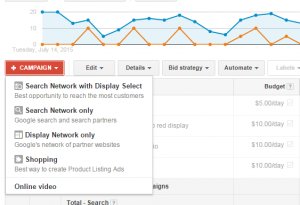Hi, Welcome
Welcome back
Understanding Your ESG Performance, Perception Gaps
There’s been an onslaught of crises that have pulled businesses into thorny issues, reinforcing the need to implement robust environmental and social governance strategies or risk not meeting the expectations of consumers and employees. Companies are asking themselves whether they are doing enough related to ESG (performance) and whether consumers are giving them credit for their ESG activities (perception). When you compare ESG performance vs. ESG perception, interesting gaps emerge. Our analysis looked at publicly available third-party ESG metrics and brand perception data from 15,000 US consumers across 275 brands to better understand this discrepancy.
Leaders: High Perception/High Performance The Leaders category exemplifies the best of the best. To reinforce their coveted positions, companies should:
- Continue to invest in sustainable and socially responsible products and services: With exciting developments in sustainable materials and processes, companies can continue to set the pace of ESG innovation and push industry standards.
- Seek industry collaboration: For true ESG progress, peers need to be brought along on the ESG journey, strengthening the category. This can include partnering with other organizations on sustainable products or processes that become leading industry examples.
Invisible Innovators: Low Perception/High Performance Invisible Innovators are characterized by marketing challenges around not communicating ESG strategies to stakeholders. To reverse “green hushing” – staying too quiet about ESG accomplishments – companies can:
- Build connectivity between their ESG and brand narratives for a cohesive story that touches all stakeholders. Integrate key ESG themes consumers care about front and center. Increased collaboration between the Chief Marketing Officer and Chief Sustainability Officer can ensure ESG is being elevated.
- Share ESG data more openly to socialize performance. Because third-party ESG metrics provide a more complete view of a company’s ESG exposure to guide investors, companies need to share their data to these ratings agencies to support their performance.
Laggards: Low Perception/Low Performance Laggards may still see ESG as a siloed function or are in an industry where no player is focused on delivering against ESG. Or the company is lagging relative to its peers. There is opportunity to establish a strong foundation in all areas:
- Look for quick wins to establish a foundation for ESG: Identify the ESG areas that are most feasible and relevant to address first. Try to move performance first, but also evaluate the need to shift perceptions.
- Set an ESG ambition and agenda: Companies need to determine what they want to achieve on ESG and the next steps to start delivering on goals. A transformation plan can help outline this new chapter of growth.
- Join industry or issue-based coalitions: Join coalitions like Sustainable Brands to connect with other companies to share best practices and learnings and build relationships.
At Risk: High Perception/Low Performance Companies with an ESG “halo” have gained rapid traction because of their idealistic missions. But often, they falter in that journey because they don’t realize the investment needed to deliver, surfacing risks of “greenwashing” or “virtue signaling.” Companies here should consider the following moves:
- Commit to bold moves against top risks to show progress and authenticity: In areas where there may be a discrepancy between statement and action, close the gap with strong commitments.
- Evaluate the validity of any explicit ESG claims in messaging: Avoid any exacerbation of the risk by ensuring existing communications are backed by evidence. ESG performance should be prioritized over perception-building.
Closing the Gap Despite attempts to politicize the topic, the underlying issues of ESG are here to stay, and they are only becoming more vital and impactful to companies’ business strategy. Businesses need to act now and assess their ESG performance vs. perception gap to ensure they’re delivering authentic, real impact while being recognized by it for key stakeholders – otherwise they risk falling behind their competitors, tarnishing their reputations, or missing out on new opportunities.
Analyzing companies on their ESG performance, we found they fell into several different categories, from Leaders to Laggards.
(9)
Report Post






